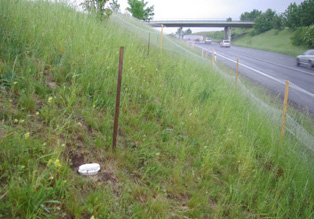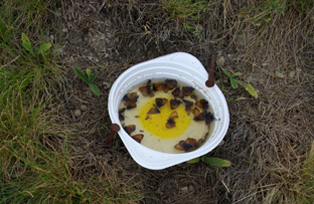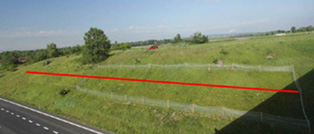

|

| 
| EN
| CZ
| 
|
|
INTRODUCTION
PROJECT GOALS
PROJECT TEAM
EXPERIMENTAL SITES
MONITORING BIODIVERSITY
USING HEMIPARASITES
DEVELOPING SEED MIXTURES
TECHNICAL STANDARDS
PROJECT OUTPUTS
MEDIA INTEREST
HELPFUL LINKS
|
Monitoring biodiversity(Working Group No. 1 - coordinator Dr. Tomas Kuras)In the first six months of the project, the aim was to explore the Czech motorway network and identify model sites for the experimental verification of both technologies to promote biodiversity (a – introduction of hemiparasites into existing vegetation, b – sowing of grass-forb seed mixtures to new slopes). Ten sites were selected on the slopes of the existing communications (see box "Experimental sites"), each with a size of approximately 1000 m2. Basic botanical and entomological monitoring were performed during the vegetation season. In the autumn hemiparasitic Rhinanthus plant seeds were sown. Locations for the new highway slope experimental sites could not be selected because of the suspension of the construction of highway bodies. In the two previous seasons of the project (2015-2016), butterflies were monitored at all localities using Moericke yellow pan traps. This method is used for monitoring of nectarivore invertebrates and also provides a representative capture of diurnal butterflies on site. Traps were made from white plastic plates (diameter 15.5 cm, height 4 cm and volume of circa 0.5 liters). The bottom plates inside the traps were painted with a yellow mark using synthetic acrylic paint (type RAL 1016). The yellow mark was about 5 cm in diameter. Plates were then filled with aqueous NaCl solution (preservative) with an admixture of detergent (surfactant for better capture of insects; as surfactant preparation was used Denkmit® bitter substance Bitrex which also worked to reduce consumption by animals). Each site was sampled by 10 traps. Traps were installed in a line, about 10 meters apart (i. e. at each sampling locality the transect line of traps was one hundred meters long). The traps were inspected regularly during the season. From each site, there are 6 sets of samples in each year, thus in total 1200 trap samples were collected from all ten locations in two years. Sample collections were carried out in two periods relative to the blooming process of Rhinanthus. The first collections of samples (3 sets) were conducted during June (i. e. with Rhinanthus blooming), the second collections were taken at the end of July and at the beginning of August (without Rhinanthus blooming). The full contents of captured insects from the yellow traps was deposited in storage vials (2 dcl), frozen and then subsequently preserved in ethanol. Determination of the material was performed in the laboratory of Mendel University in Brno. |
   |